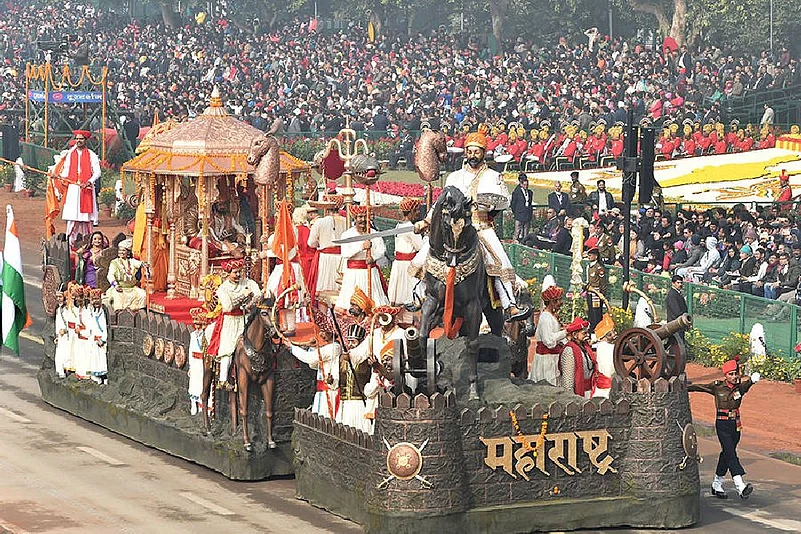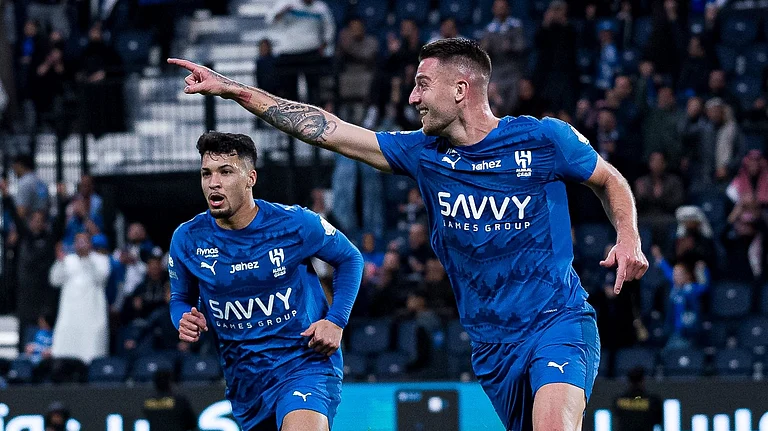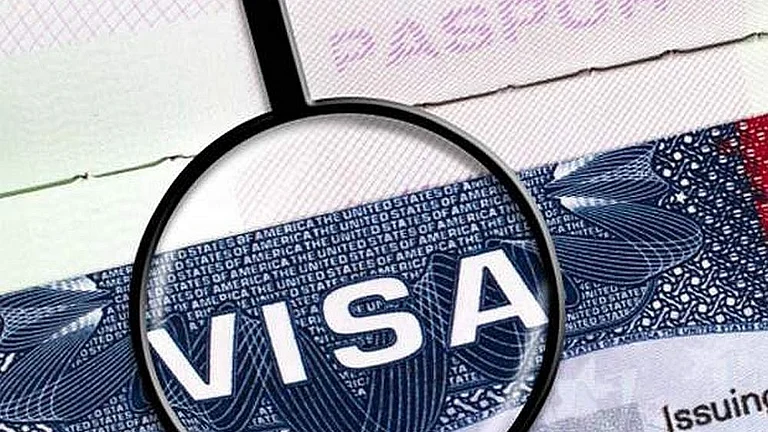The ceremonies of the 74th Republic Day were much more than just celebrating 75 years of Independence. The Kartavya Path tableaux presented a picture of a certain ‘path’ India is walking on; a Hindu nation with 'temples as its primary agenda, ignoring the diverse culture and population it inhabits', observed tribal activists, opposition leaders, and activists from various states, while interacting with Outlook.
The tableaux celebrating ‘might’ and raising questions
As the nation celebrated Republic Day on January 26, 2023, the media termed the ceremonial parade in the national capital as a "display of the might of the Indian republic". It broadcasted the armed forces' contingents showcasing their prowess in front of the entire nation as tableaux by the states, the Union Territories (UTs), and ministries adorned the Kartavya Path with their diversity and government-initiated awareness campaigns. A total of 23 tableaux, including 17 states and Union territories and six different ministries and departments were displayed at the ceremony, which was attended by PM Narendra Modi along with the chief guest, Egyptian President Abdel Fattah El-Sisi.
The Defence Ministry, responsible for the Republic Day parade and celebrations each year initiates the process of deciding upon the tableaux by asking all the states, the UTs, the Central government, and a few constitutional authorities to send the proposals of their tableau. In September, last year, the ministry had said that the tableaux would "depict the nation’s rich cultural heritage, economic progress, and strong internal and external security". The assigned theme to the participants for this year's celebrations revolved around 75 years of India's Independence, the International Year of Millets, and ‘Nari Shakti’ (woman power).
Outlook assessed and took an in-depth glance at the tableaux which were meant to reflect the culture, traditions, heritage, and economic prospects of the states and the UTs they represented. Of the 17 states’ and UTs’ tableaux, 11 showcased various Hindu temples, including the tribal states of Tripura, Assam, and Jharkhand. Furthermore, the new Jammu & Kashmir displayed the Amarnath temple, while the UT of Ladakh presented the Kartse-Khar Shrine.
R-Day tableaux hint at a Hindu nation
The lack of diversity reflected by the tableaux displays raised questions over the debate on religion-based patriotism in a democracy. The tribal and non-Hindu factions ask if the Republic of India was succumbing to the struggles of a soon-to-be 100-year-old organization's vision.
Commenting on the Assam tableau, which showcased the Kamakhya temple and a soldier, Debrata Saikia, the state’s leader of opposition, asked if the soldier laid down his life for the land of Assam and its people or for the temple. Speaking to Outlook, he said, "Kamakhya is a celebration of nature and fertility, but it has been appropriated as a symbol of mainstream Hindu practices, which is far away from the beliefs of the people of Assam, a tribal state. The tableau seemed to have rejected the history and experiences of the tribals and non-tribal populations of Assam. This is an attempt to mislead the nation and saffronise our culture.”
Assam has often been called 'Sankardev-Azaan Ore Dexh’, the land of Sankardev and Azaan Fakir, two religious and cultural saints of the medieval history of the state, responsible for altering its socio-religious landscape. Recalling this tale of history, Balindra Saikia, a central committee member of the CPI (M-L), said, "This government has no idea about the rich culture that our state exhibits; there is so much to show. We celebrate Bihu, Kherai, Gumraag, and Batho pujas, all worshipping nature, but the 74th Republic Day celebrations rejected the history and experiences of the tribals and non-tribal populations of Assam.”
Similarly, several Jammu & Kashmir civilians strongly believe that their beautiful land and heritage cannot be sufficiently represented with a mere temple. And echoing their emotions, a Kashmiri politician, on account of anonymity, told Outlook that local inputs are not involved with the decisions of showcasing J&K within the newly formed UT or outside of it. "It is by those in power and for those in power. We can only watch as mere victims or spectators," he said.
All India Central Council of Trade and Unions (AICCTU) Secretary Clifton D'Rozario called the temple exhibitions during the recent Republic Day celebrations a manifestation of what the BJP-RSS forces have for long envisaged for India. A report by The Print reveals that the RSS has almost doubled its presence organisationally in the last decade, entering new geographical territories, and holds the establishment of India as a Hindu nation as its topmost priority.
"It is scary to admit it, but the BJP has given its statement that we are inching closer to a Hindu nation, discarding all other identities and populations", Rozario told Outlook.
Former vice-chancellor of the Islamic University of Science and Technology Kashmir, Professor Siddiq Wahid believes that the name and the theme of this year’s Republic Day tableau were no surprise “which only confirmed the BJP’s declared strategy for India’s future”.
He also said that it is upon the conscience of the majority religious community of the country to decide what they want. Hinting at the status of the minorities in contemporary India, who do not have much say in deciding their own fate, he only added, "We wait."
Minority, Adivasi identities remain excluded from tableaux display
Jharkhand activist and scholar, AK Pankaj, a contemporary of Ram Dayal Munda, felt “no surprise” at the attempts of the ruling BJP to assimilate Adivasis into the mainstream Hindu sect and categorize Adivasis as a backward section of the Hindus. Speaking to Outlook, he said, “Both BJP and Congress have targeted tribal states and used the tribal population for their own agendas”.
However, the collusion of the BJP with capitalists has proven “deadliest for tribal and minority populations”. Earlier the BJP and RSS connivance was implicit, but their agenda no longer is under wraps. And Pankaj believes that the same was strikingly visible during this year’s Republic Day celebrations that focused on a singular identity of faith, perhaps “shredding apart the constitutional values of the country on the day the constitution was adopted”.
"January 26, 2023, was the formalisation of a Hindu nation, but you are not to say it out loud lest you will be declared anti-national and terrorist,” he said.
Further, he noted how his own state, Jharkhand, a tribal populace, has witnessed a striking demographic change under the BJP rule, which has “worked in favour of its capitalist friends”.
“The present JMM government led by tribal leader Hemant Soren has received flak for appeasing the non-tribals of the state, although I feel that the past governments and the present demography do not leave much scope for this government to overlook its non-tribal population, which actually holds the financial powers, hence they appropriate a tribal state by representing us with a temple and making a god out of our valoric heroes like Birsa Munda", Pankaj said adding that the masses will keep silent as they are accustomed to the fear evoked into them by governments and establishments.
The corroboration of religious symbolism with politics in India's 75th year of Independence raises questions about the country’s secular values and diversity being under threat. On the repeated attacks on dissent and attempt to uniform India under the banners of 'One Nation, One Language, One Religion' and quashing dissent, Pankaj said to Outlook, that the final confrontation will take place between the Adivasis and non-Adivasis if they are forced to forget their roots and originality, and accept a new identity.


























